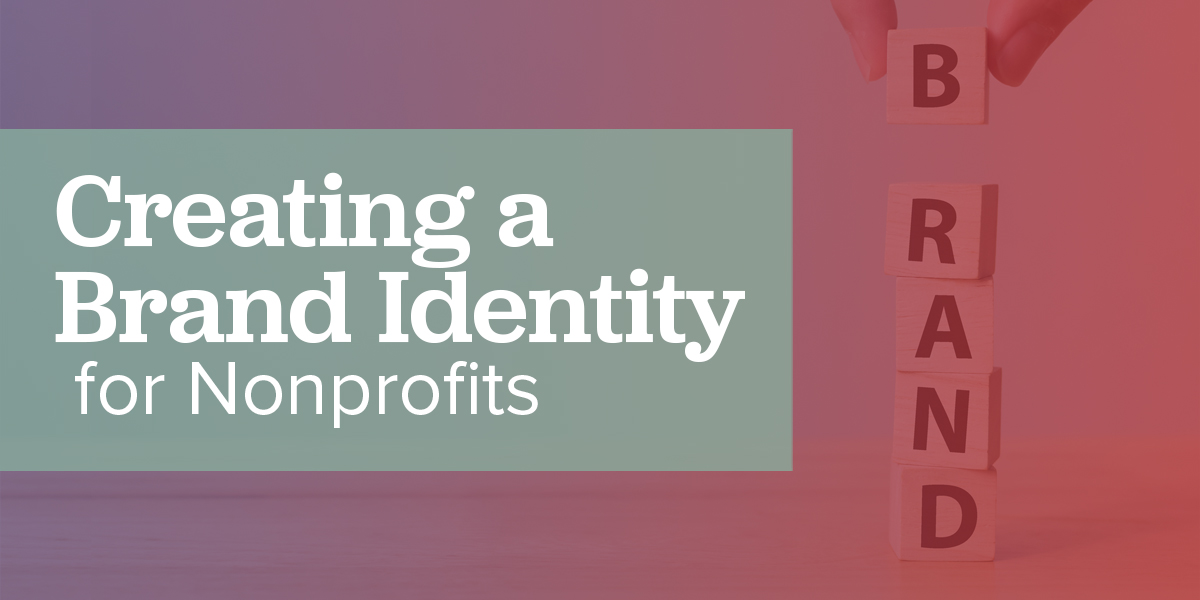The Importance of Creating a Brand Identity for Nonprofits
Ilia Jones | August 2021
What is Brand Identity?
Branding, or brand identity, is the visual and written way you tell your nonprofit organization’s story to others. It’s how you present your organization in all formats, from social media and your website to printed brochures and thank you letters. Having a strong brand identity means having a cohesive and structured way to use brand elements so that every interaction with your nonprofit looks and feels the same. It also means having a brand that is strongly linked to mission and represents that in all communication.
Brand Recognition: Just as Important for Nonprofits
You can recognize certain brands from just their logo or maybe even their color scheme. Target, General Mills, Twitter—they all have strong brand identities and broad brand recognition. That recognition is what good branding can do for your nonprofit.
For nonprofit organizations, recognition also means trust. You want potential donors to trust that your organization will do the right thing with their hard-earned dollars. Presenting your nonprofit as a pulled-together and professional organization will help earn trust and create lasting, authentic donor relationships.
Who Are You?
The first part of developing a brand identity is to ask, what does our nonprofit represent? What is the cause we are working for? How and why do we do what we do?
Look to your mission and vision statement, goals, promise or any other verbiage that defines what your organization does, whom you help and what your goals are for the future. Notice elements or themes that repeat or strike you as particularly potent or true. Recognize the truth and feeling behind the words. That’s who you are.
This may be an excellent opportunity to update or refine your mission if it’s been a while. Take time to hone in on what you do, whom you serve, why and how. With a strong vision of your nonprofit’s identity, you can start to build a brand to match.
Developing Your Brand: Visual Brand Identity
To earn trust, every touchpoint with your nonprofit organization should look and feel consistent—same logo, same colors, same font. Whether it’s a social media post or a fundraising letter in the mail, it should be quickly and easily identified as you.
Logo
You should have a logo for your organization. If you don’t have one, or the one you have is outdated or in need of an upgrade, find a designer to help. Your logo should be used on nearly everything you do. It should be on your website, stationery, and be the set favicon for your website. Define strict rules about how, when and where to use your logo.
Your logo should never be stretched or distorted and it should never have the colors changed. Being consistent with your logo helps you gain brand recognition.
Color Scheme
Your branding should have a few select colors that represent who you are. Ideally, these colors will be reflected in your logo to create a cohesive look. Define your brand colors so they can be used across print and digital formats. List the hexadecimal, RGB and CMYK codes for all of your brand colors in your style guide and enforce that they are used correctly.
You may want to use specific contrasting colors as highlights or gradients of your colors. This helps keep your design interesting and avoids monotony.
TYPEFACE
Type is a large part of your brand personality. Serif fonts can be seen as formal, old-fashioned, or traditional. Sans serif fonts can be interpreted as clean and minimalist. Swooping, cursive fonts are romantic or whimsical.
Your logo and tagline may have a different typeface or effect than the rest of the text on your website, but you can use it to inspire the choices you make. Or consider what your nonprofit represents. Choose a typeface that matches your personality and mission. Select the size and color of header options and body copy.
Beyond the Logo: Brand Voice
Branding is also your voice and how you communicate with others. Aside from the obvious, using proper spelling and grammar, there is a remarkable amount of leeway in the written word. Think about how you would “elevator pitch” your organization, then consider how your colleagues might approach the same task. Odds are, it will be very different. Defining a brand voice helps iron out the differences to sound like one unified voice.
A simple adjective exercise can often help shed light on who you are and who you aren’t. Use a thesaurus to help.
For example:
- You are direct but not bossy.
- You are forward-thinking but not starry-eyed.
- You are heartfelt but not soppy.
Then provide examples of how to exemplify the adjectives that define your organization in words. And what not to sound like.
You may also want to define the level of formality in your written communication. This will depend on your audience and donor base. Do you want to sound friendly and direct? Or do you want to exude confidence and experience in the field?
Using Your Brand Identity
Now that you’ve defined your brand identity, it’s time to use it. Use your strong vision of who you are to inform your content strategy. Update any branded materials to reflect your new visual brand and update the content with your new brand voice.
You will be amazed at what a difference it can make!
Perhaps all this work on your brand identity has you motivated for a long-delayed website refresh or a scintillating new social media campaign. Whatever your aspirations, ArcStone can help your nonprofit increase its impact on your local community. Contact us today to learn more.


